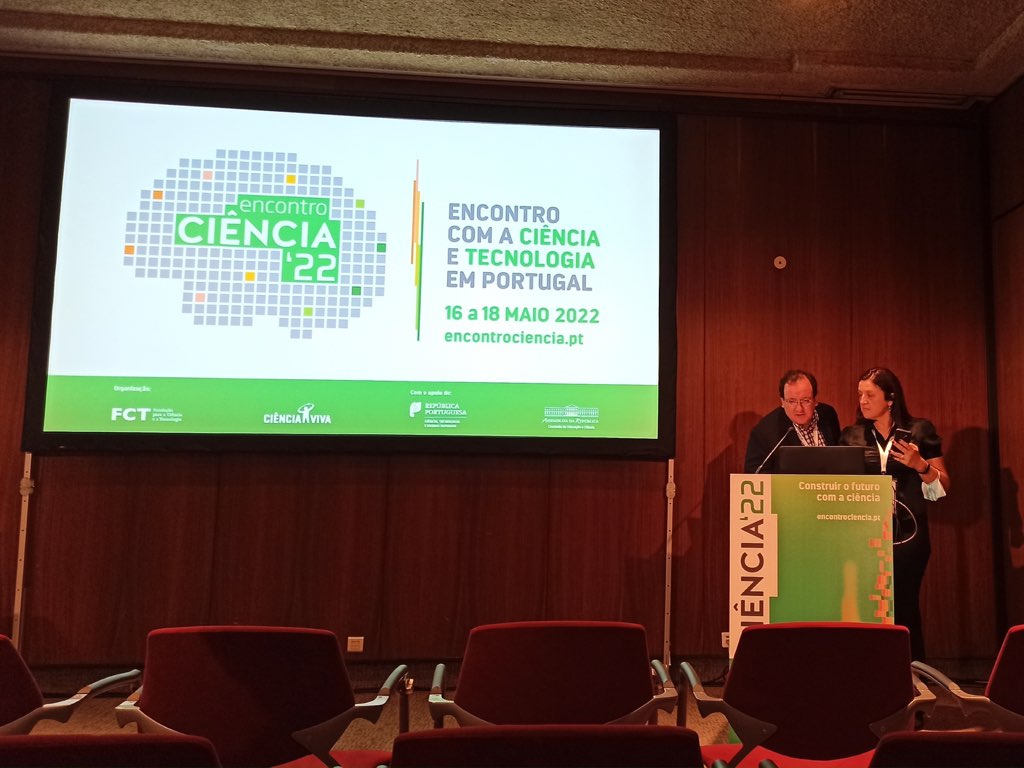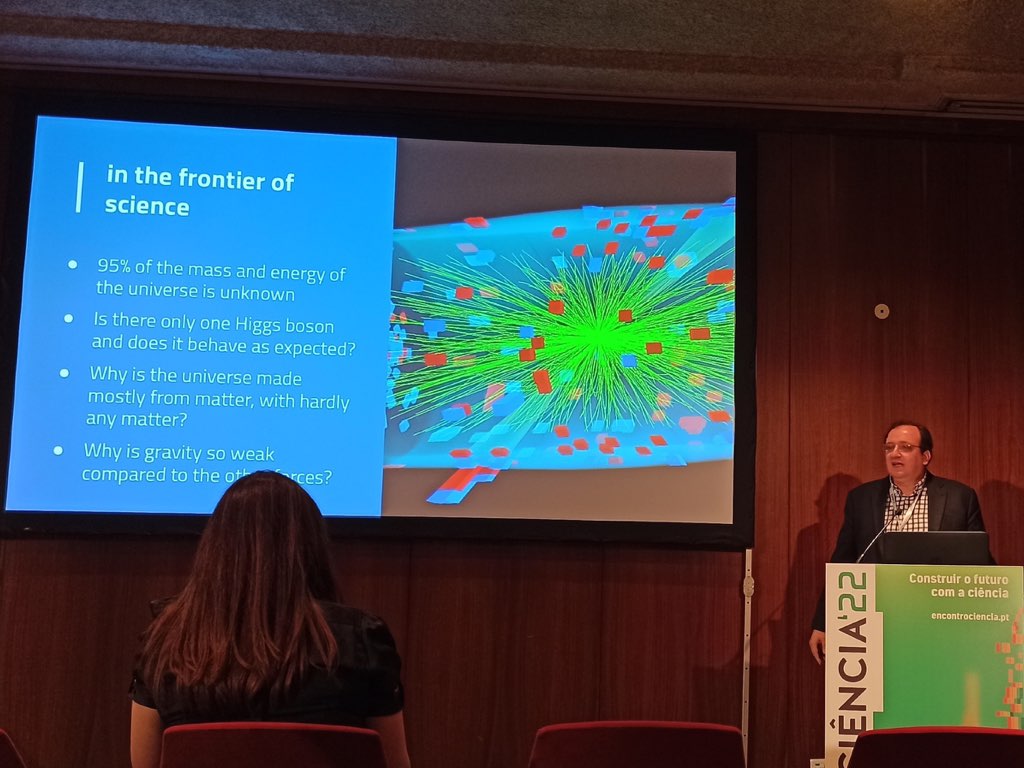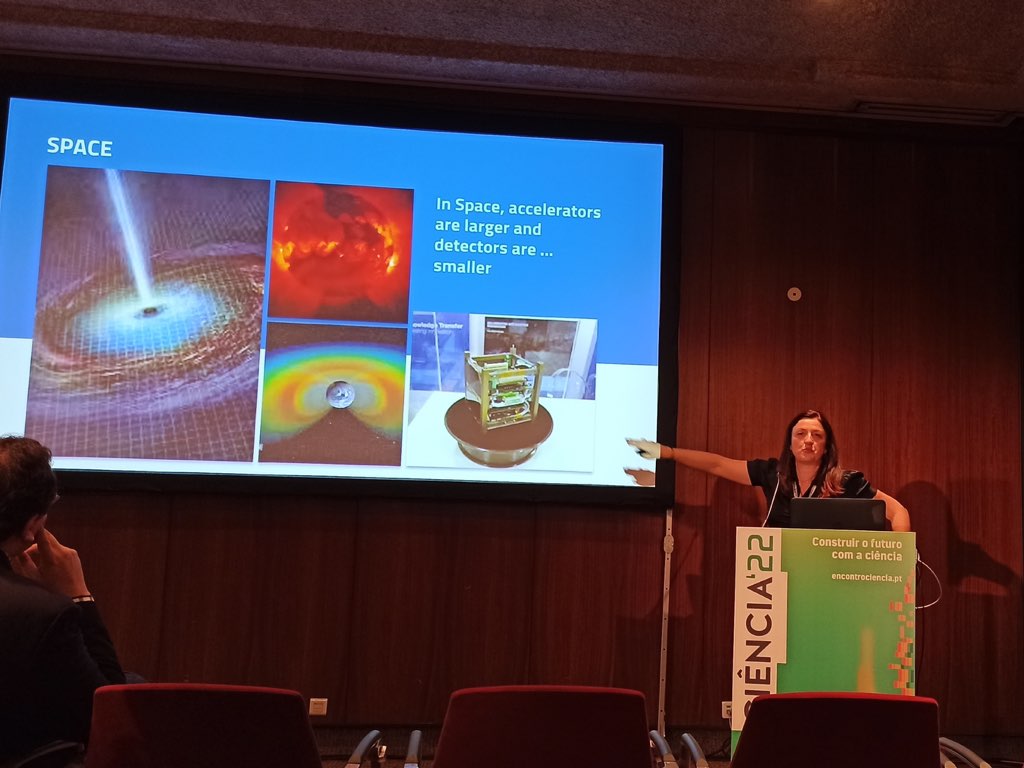CERN, LIP and particle physics at Ciência 2022
"The impact of CERN, LIP and particle physics were discussed on the first day of the Science 2022 Meeting, in two presentations by LIP researchers in the session ´Space Sciences´"

The Science 2022 Meeting started on May 16th, national scientist's day (and José Mariano Gago's birthday). The date was celebrated in the opening plenary session "Building the future with Science".
At around 11h30, the first set of thematic sessions began - in total, eight in parallel - among them the session titled "Space Sciences", moderated by João Fernandes, from the Center for Earth and Space Research of the University of Coimbra. LIP was represented by Nuno Castro, who spoke about "CERN and Particle Physics: challenges and opportunities", and Patrícia Gonçalves, with the communication "From Particle Physics to Health and Space".
The session was opened by David Santos, from Clube Ciência Viva do Agrupamento de Escolas de Sta. Maria da Feira, who presented the work he is developing with his colleague Rafael Santos, and which consists in the modeling of a monoatomic gas with an approximation to the Maxwell-Boltzmann distribution. The work, presented with remarkable resourcefulness, is going very well, and the youngsters admit that they don't want to stop here.
We then moved on to the communications from the research centers. As one can guess by now, there was more than just Space in this session, where the close relationship between the infinitely large and the infinitely small, between astrophysics and cosmology, on the one hand, and particle physics, on the other, was repeatedly highlighted.
Márcio Ferreira, from the Physics Center of the University of Coimbra, bridged the gap with the paper "Neutron stars, a particle physics laboratory", in which he spoke of how these ultra-dense sidereal objects allow us to explore the physics of strong interactions (more specifically, the phase diagram of quantum chromodynamics, or QCD), building models and scenarios that are then compared with observations - for example, of a collision of a binary of neutron stars.
Nuno Castro (LIP and University of Minho) reinforced the bridge, now in the opposite direction, starting by explaining how the understanding of the Universe advances, whether by looking at the sky, on the large scales, or by studying the tiniest constituents of matter in particle accelerators. After a brief presentation of CERN and LIP, its reference partner in Portugal, he went on to describe different aspects of the impact of particle physics and the large European laboratory: from the internationalization of Portuguese companies to advanced training of engineers, through technological innovation in areas as distinct as civil, mechanical, electrical and electronic engineering, information technologies, cryogenics, optics or photonics.
Patrícia Gonçalves (LIP and Instituto Superior Técnico) spoke of concrete applications of particle physics technologies (from the interaction of radiation with matter to the construction of detectors and instrumentation, from the acceleration of particle beams to software development) to the areas of health and space exploration. She also listed the various R&D projects developed in collaboration with national and international partners, and through which LIP, as an Associate Laboratory, seeks to maximize its impact on society.
Two presentations by researchers from the Multidisciplinary Center for Astrophysics (CENTRA) followed. António Amorim (CENTRA and FCUL), in his communication "Latest results on the black hole at the center of the galaxy", told us about the GRAVITY project, which studies the black hole at the center of the Milky Way with four telescopes of the European Southern Observatory (ESO) in Chile. Again, the relation to particle physics: one of the problems with the successful Standard Model of particle physics is the difficulty in adding gravity to it. And this makes interesting anything that allows us to better understand gravity. Guilherme Raposo (CENTRA) also talked about gravity, in "Exploring strong gravity with GRIT (Gravitation in Técnico)". And especially about gravitational waves, which inaugurate a new era in observational astronomy. To conclude the session, Francisco Introduced to the audience Institute of Astrophysics and Space Sciences (IA) - its birth, organization and current projects, vision for the future.
It was a rich session that took us on a voyage to the space sciences and beyond.
Session video https://www.youtube.com/watch?v=KQ6-k3mD6NE
Session video and slides https://www.encontrociencia.pt/2022/?accao=sessoestematicas





